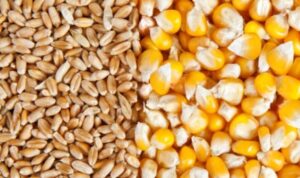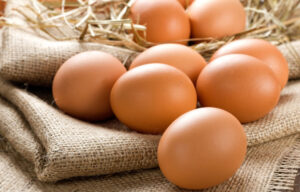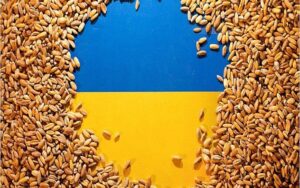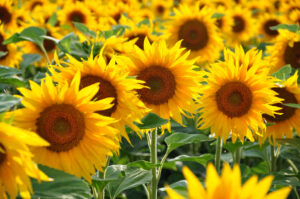
Ukraine has exported 35.093 mln tonnes of grains and pulses since the beginning of 2024-2025 marketing year (MY, July-June) as of April 30, of which 2.269 mln tonnes were shipped since the beginning of the month, the press service of the Ministry of Agrarian Policy and Food reported, citing the State Customs Service.
According to the report, as of April 29 last year, the total shipments amounted to 40.711 million tons.
At the same time, since the beginning of the current season, Ukraine has exported 13.873 mln tonnes of wheat (15.55 mln tonnes in 2023/24 MY), 2.264 mln tonnes of barley (2.181 mln tonnes), 10.8 thsd tonnes of rye (1.2 thsd tonnes) and 18.437 mln tonnes of corn (22.502 mln tonnes).
The total export of Ukrainian flour since the beginning of the season as of April 30 is estimated at 58.4 thsd tonnes (86 thsd tonnes in 2023/24 MY), including 54.2 thsd tonnes of wheat (81.3 thsd tonnes).

The State Service of Ukraine for Food Safety and Consumer Protection has approved the form of an international certificate for the export of table eggs to Canada, the press service of the Union of Poultry Breeders of Ukraine reports.
“Please note that eggs can only be exported to Canada in cooperation with licensed importers in Canada, who must have a valid SFC (Safe Food for Canadians License),” the agency said.
The form of the certificate is available on the official web portal of the State Service of Ukraine on Food Safety and Consumer Protection in the section “International Cooperation” in the section “Certificates for export from Ukraine”.
The agency’s website also contains additional information on compliance with Canadian legislation by producers of table eggs and egg products, in particular on the storage and transportation of eggs and egg products, labeling of eggs and egg products, salmonellosis control program – egg products, salmonellosis control program – table eggs, requirements for egg sorting, and identification standards.

As of April 25, Ukraine had exported 34.74 million tons of grains and legumes since the beginning of the 2024-2025 marketing year (July-June), of which 1.916 million tons were shipped since the beginning of the current month, according to the press service of the Ministry of Agrarian Policy and Food, citing information from the State Customs Service.
According to the report, as of April 25 last year, total shipments amounted to 40.289 million tons.
At the same time, since the beginning of the current season, 13.714 million tons of wheat (15.404 million tons in 2023/2024 MY) have been exported, 2.258 million tons of barley (2.178 million tons), 10.8 thousand tons of rye (1.2 thousand tons), and 18.252 million tons of corn (22.231 million tons). (1.2 thousand tons), and corn – 18.252 million tons (22.231 million tons).
Total exports of Ukrainian flour since the beginning of the season as of April 25 are estimated at 58 thousand tons (in 2023/24 MY – 85.7 thousand tons), including wheat flour – 53.8 thousand tons (81 thousand tons).

In January-March 2025, imports of copper and copper products to Ukraine increased by 10.5% compared to the same period in 2024 to $46.42 million.
Exports of copper products increased by 17.7% to $21.35 million.
In March, imports amounted to $16.14 million, while exports amounted to $7.05 million.
For the whole of 2024, copper imports remained stable ($140.8 million), while exports increased by 22.4% to $88.24 million.
Copper is widely used in electrical engineering, pipe manufacturing, alloys, medicine and other industries.

Germany topped the list of leading beer exporters to China in the first quarter of this year (by $23.258 million), according to the State Customs Administration (SCA) of the PRC.
It was followed by the Netherlands (by $11.799 million), Belgium (by $11.239 million), and Spain (by $10.028 million). Among Asian countries, Japan supplied the most beer to China – by $5.276 million.
In total, in January-March 2025, China imported beer from 52 countries and exported it to 89.

“Kernel, one of the largest Ukrainian agro-industrial groups, processed 845 thsd tonnes of oilseeds in the third quarter (January-March) of the financial year (FY) 2024/25, up 3% y-o-y, but down 9% q-o-q, according to the agroholding’s report.
According to the report, in January-March 2025, Kernel processed 694 thousand tons of sunflower seeds and, due to the lack of raw materials in the domestic market of Ukraine, also processed 151 thousand tons of soybeans at three plants. In addition, the agroholding processed 50 thou tons of sunflower seeds under tolling agreements with third parties.
As a result of processing of both sunflower seeds and soybeans in the third quarter of 2024/25, the agricultural holding’s edible oil sales fell by 9% year-on-year to 347 thsd tonnes. At the same time, sales of edible oil in the first nine months of FY2025 amounted to 1 mln tons, which is 6% less than in the same period last year.
The report also notes that grain supplies to the agricultural holding’s elevators decreased by 2% to 2.7 million tons in the first nine months of FY2025.
“In the third quarter of FY 2024/25, Kernel reduced grain exports by 15% to 1.6 mln tonnes compared to the same period last year, which it explained by the decline in the harvest in Ukraine. In total, Kernel exported 4.4 mln tons of grains and oilseeds in the first nine months of the year, accounting for 12% of the national exports.
Transshipment through the agricultural holding’s export terminals reached 2.5 million tons in the third quarter, up 2% year-on-year. This volume included 1.8 mln tons of grains, 0.3 mln tons of edible oil, and the rest was made up of oilseeds.
In total, for the first nine months, the transshipment volume amounted to 7.3 mln tons, up 65% year-on-year, due to the low comparison base in FY 2024/25 due to the closure of the Black Sea ports at the beginning of the season, the agricultural holding summarized.
Kernel is the world’s largest exporter of sunflower oil, one of the largest producers and sellers of bottled oil in Ukraine. In addition, it is engaged in the cultivation and sale of agricultural products.
In the first nine months of 2024, the agricultural holding reduced its net profit by 53% to $204 million, while its revenue decreased by 4% to $2.595 billion, and its EBITDA decreased by 36% to $384 million.